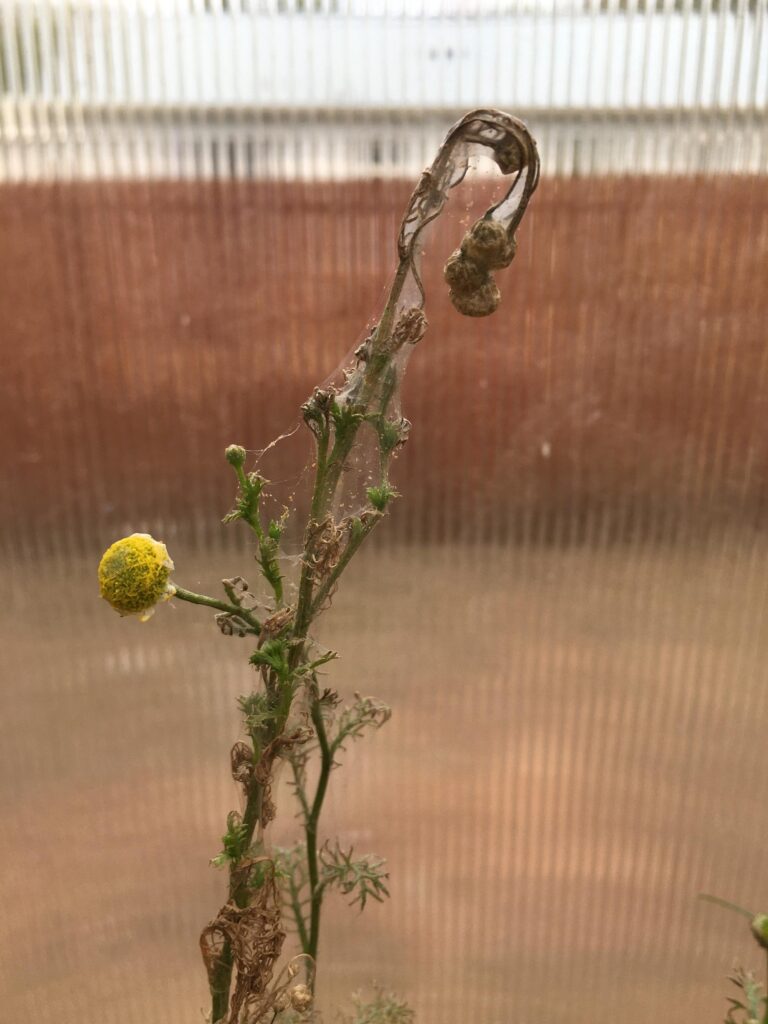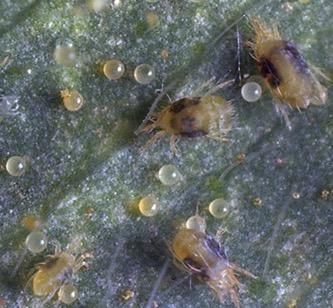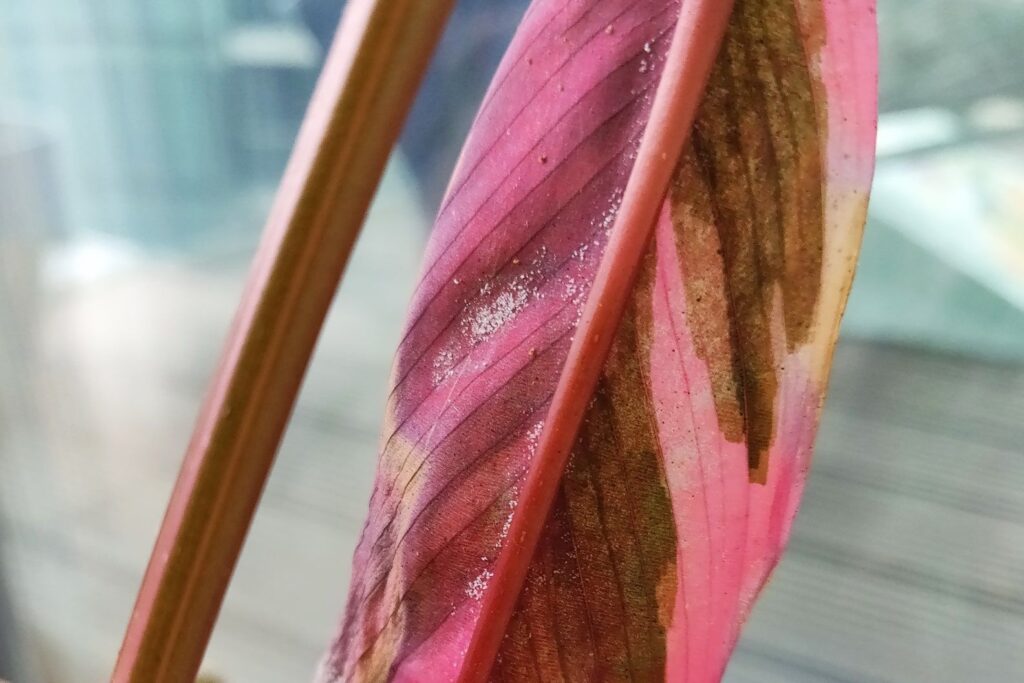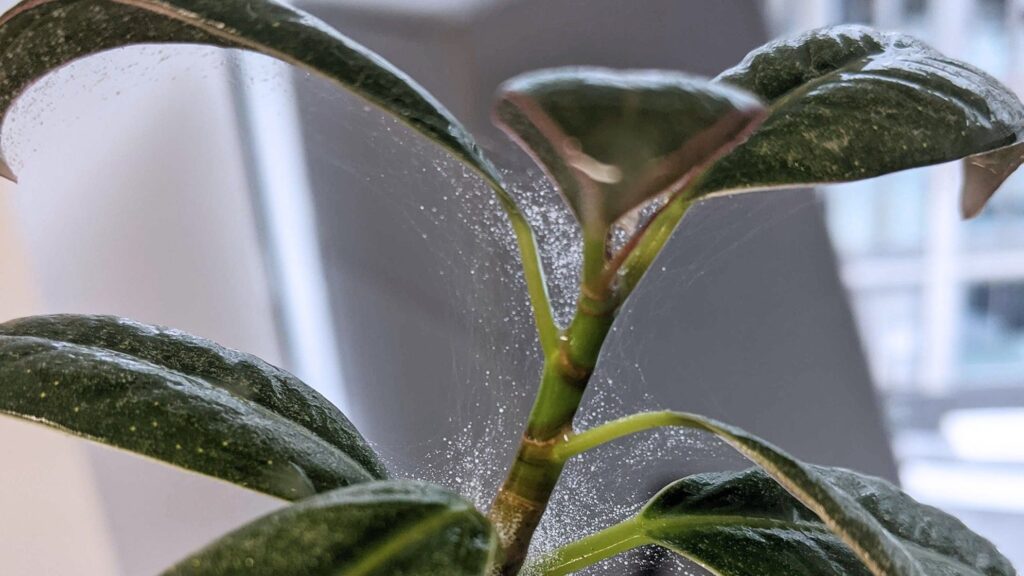How to Identify and Manage Spider Mites in the Home Garden:Spider mites are pervasive and minuscule garden pests, closely related to spiders and ticks. These nearly microscopic creatures inhabit a wide range of environments, including the human body. Mites are often classified based on their habitat—cheese mites, dust mites, and eyelash mites, to name a few.

The term spider mite specifically refers to plant-feeding mites. In Oregon, for instance, the spruce mite is a common pest of spruce and other trees, while the two-spotted spider mite is notorious for infesting a wide variety of plants. This article focuses primarily on the two-spotted spider mite, though much of the information applies to other plant-feeding mites as well.
Thriving in hot, arid conditions, spider mites can inflict significant damage on ornamental and vegetable plants. This guide covers:
- How to identify spider mites, including microscopic images of these nearly invisible pests.
- The types of damage they cause and telltale signs to watch for in your garden.
- Environmental conditions that foster their proliferation.
- Effective strategies for managing infestations—including what to avoid.
- Preventative measures to keep spider mite populations in check.
Identifying Spider Mites
Closely related to ticks and spiders, two-spotted spider mites possess eight legs in their adult stage and are approximately the size of a grain of sand or a pinpoint from a pencil. Their eggs are tiny, spherical, and translucent, making them nearly impossible to detect without magnification.
After hatching, the mites progress through a larval stage, followed by two nymphal stages—both typically featuring six legs—before reaching adulthood. Adult two-spotted spider mites are pale green to orange for most of the growing season but often turn red in later generations.
Signs of Spider Mite Damage
The two-spotted spider mite is highly polyphagous, feeding on a diverse array of plants. However, the symptoms of infestation vary depending on the plant species and leaf structure. Mite damage often begins in the lower portions of a plant and spreads upward as populations increase. The following are key indicators of a significant infestation:

- Pale or Yellowing Leaves: Affected leaves may appear chlorotic, as if suffering from nutrient deficiency. While not a definitive sign of spider mite presence, unexplained yellowing should prompt closer examination.
- Stippling: Infested leaves develop tiny white or yellow specks where mites have extracted chlorophyll. Heavy feeding can result in leaves losing most of their green pigmentation.
- Bronzing: Some plant species respond to mite feeding by developing a bronze or brownish hue. This may occur alongside or in place of stippling.
- Dusty or Gritty Leaf Surfaces: Mites themselves are difficult to detect, but their presence is often revealed by the accumulation of waste, fine webbing, dead mites, and shed exoskeletons. This buildup gives leaves a rough, gritty texture when rubbed between fingers.
- Webbing: Fine silk webbing, resembling delicate spider webs, appears on new growth and between leaves. A substantial accumulation of webbing signals a severe infestation. Mites are most visible when moving within this silk.
Environmental Conditions Favoring Spider Mites
Hot, dry weather provides optimal conditions for spider mite proliferation. These pests thrive at temperatures above 80°F with humidity levels below 50%, though populations can expand whenever humidity drops below 90%. When warm nights accompany prolonged dry spells, mites can complete a generation in just 5–7 days. Their rapid reproduction and diminutive size often make infestations seem to explode overnight.

Plants under drought stress are particularly vulnerable, with severe infestations potentially reducing crop yields by more than 50%. Additionally, certain broad-spectrum insecticides inadvertently promote spider mite outbreaks, a phenomenon known as mite flare. This occurs when pesticides eliminate beneficial predatory insects and mites that naturally regulate spider mite populations. Some insecticides may even accelerate spider mite reproduction. To mitigate this risk, opt for soft pesticides that pose minimal harm to beneficial organisms.
Managing Spider Mite Infestations
As with most pests, early intervention is key to controlling spider mites effectively. During hot, dry periods, gardeners should routinely inspect plants for signs of infestation.
Non-Chemical Control Methods
- Prune and Dispose: Remove affected plant parts and destroy them to prevent further spread.
- Water Blast: A strong jet of water can dislodge mites from plants, though this method is unsuitable for delicate or young plants.
- Increase Humidity: Overhead watering or misting can make the environment less favorable for mites (though excessive moisture may promote fungal diseases).
- Remove Severely Infested Plants: In extreme cases, complete plant removal may be the most effective course of action.
- Encourage Predatory Mites and Insects: Maintaining a diverse garden ecosystem supports populations of beneficial predators that help keep spider mite numbers in check.

Low-Impact Chemical Controls
- Insecticidal Soap: This contact treatment must thoroughly coat the mites to be effective. Multiple applications are often necessary, as eggs remain unaffected. Apply an initial spray over the entire plant, followed by another application 2–3 days later to target newly hatched mites.
- Neem Oil: Similar to insecticidal soap, neem oil must be applied directly to the mites’ bodies. To protect pollinators, avoid using neem oil on blooming plants.
Both soap and neem oil can damage plants when temperatures exceed 80°F, so test a small section before full application in hot weather.
Alternative Chemical Treatments
For more targeted control options, refer to the Pacific Northwest Pest Management Handbooks. Various miticides are available for homeowners, but most require direct contact with the mites. As with all pesticides, read labels carefully and follow application guidelines precisely to prevent resistance buildup—a common issue with spider mites when the same chemical is used repeatedly. Temperature constraints and timing recommendations will also be specified on product labels.
Preventing Spider Mite Infestations
Several natural factors help regulate spider mite populations. Cold winters often reduce outdoor mite numbers, while rain and high humidity can suppress outbreaks.
To prevent infestations:
- Monitor plants regularly, especially during hot, dry spells. Early detection allows for simpler, non-chemical interventions.
- Foster populations of predatory mites, which are naturally present in many gardens. A diverse habitat with a mix of perennial plants supports their presence.
- Avoid unnecessary pesticide use, as broad-spectrum chemicals often eliminate beneficial predators.
- In optimal mite conditions, misting plant leaves can elevate humidity and deter mite colonization.
Commercial growers sometimes introduce predatory mites as a biological control strategy, though this approach may be impractical for home gardeners. Instead, conservation of existing predatory mite populations through judicious pesticide use can provide effective, long-term control.
By understanding spider mite behavior and implementing strategic management practices, gardeners can minimize damage and maintain healthy plants throughout the growing season.
